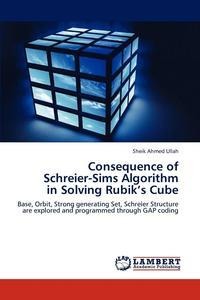
Liknande böcker
Consequence of Schreier-Sims Algorithm in Solving Rubik's Cube : Base, Orbit, Strong generating Set, Schreier Structure are explored and programmed through GAP coding
Bok av Sheik Ahmed Ullah
Successful computation with a permutation group is largely depended on our ability to find an effective representative for the group. In particular many calculations can be facilitated if we have a coset representative for each subgroup of the chain in its predecessor. So we have tried in this book to construct a chain in which each subgroup is a point stabilizer of the last. These concepts were introduced by Schrier-Sims as an effective description of a permutation group. For the holistic idea we have described various versions of the Schreier-Sims Algorithm. Finally in solving Rubik's Cube, we have thoroughly discussed the structure and various subgroups of Rubik's Cube before applying the Schreier-Sims Algorithm. These subgroups are easier to understand and solve. We have marked the 48 moving squares to convert the twists of Rubik's Cube in to permutation cycle. Handling an enormous group like the Rubik's Cube Group becomes very easy when we use the Schreier-Sims Algorithm to form the stabilizer chain of the Rubik's Cube Group. This stabilizer chain was then used to factorize a random element of the Rubik's Cube Group, which will lead us to the solution of the Rubik's Cube.
Visa pris inkl. frakt Inkl. frakt
Consequence of Schreier-Sims Algorithm in Solving Rubik's Cube
511 kr
Finns i lager







